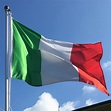
I have been to Florence many times. As have great artists, architects, writers, poets, pilgrims, those wealthy souls on their grand tours, historians, politicians, and royalty over the centuries. My sister lives in Florence. Lucky her. Lucky me. Today I plan to walk around some of the major sites, armed with my tourist map, hat and sunglasses. Pleasantly warm.
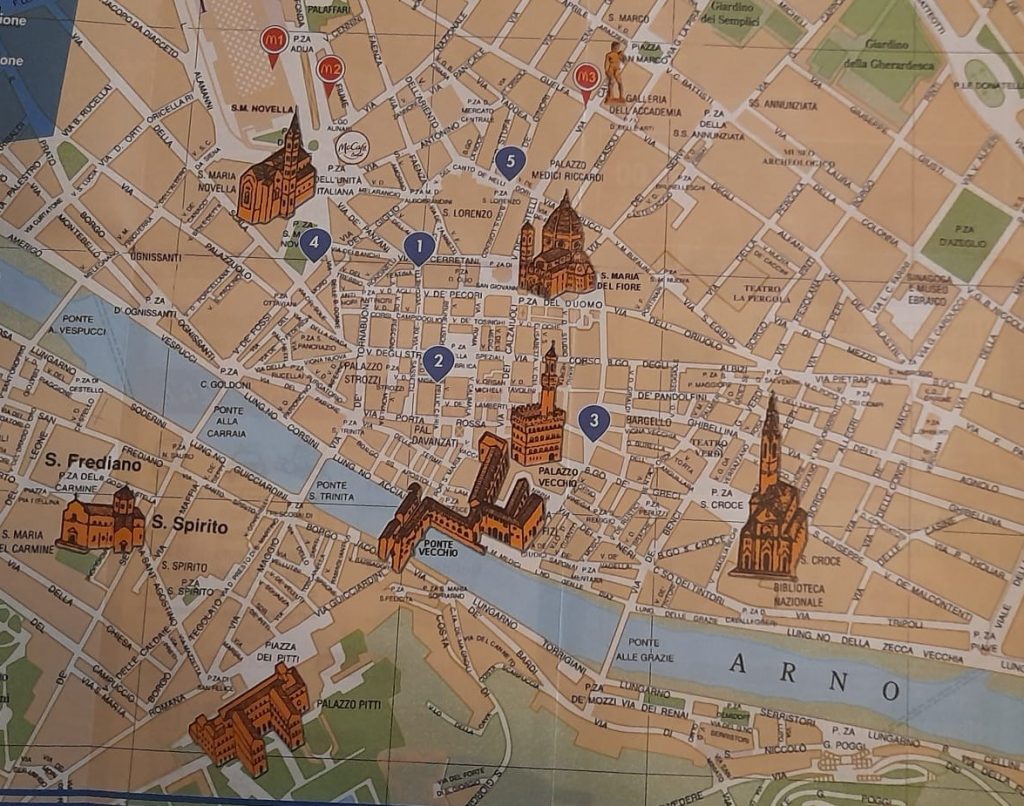
British Institute
My walk begins outside the British Institute, founded in Florence in 1917 and, currently, located in a grand palace on the road running along the south bank of the River Arno. Weekly lectures are held here on art and history related topics, as well as musical events. One can sign up for courses of study on such subjects as art history and English. Within its precincts is a library stacked full of books from floor to ceiling in a gorgeous room. During the day, folks may go in and out, relax on the sofas and read English and Italian newspapers and other literature displayed on tables.
Borgo San Jacopo
I set off from the Institute towards the renaissance bridge of Ponte Santa Trinita, a graceful stone bridge with three arches, and poise myself in the middle of it looking eastwards towards the Ponte Vecchio (Old Bridge).
Past the end of the Ponte Santa Trinita, no road runs alongide the river. Thus I take the street parallel to it, Borgo San Jacopo. A street full of old buildings, such as the 12th century stone tower, the Torre Belfredelli. Ivy smothers half of the frontage. I walk round the side of it and look upwards. Looks like an apartment inside is being lived in. An enviable bolt hole.
Another tower, the 12th century Torre dei Marsili, now housing a wine merchant on its ground floor, features a bas-relief over the doorway of the annunciation scene, in which the Archangel Gabriel tells the Virgin Mary she will conceive and bear a son, Jesus Christ. Either side of the relief is a kneeling angel. These bas-reliefs are made of glazed terra cotta by the della Robbia studio. This one is a copy of the original, which is inside the building I gather.
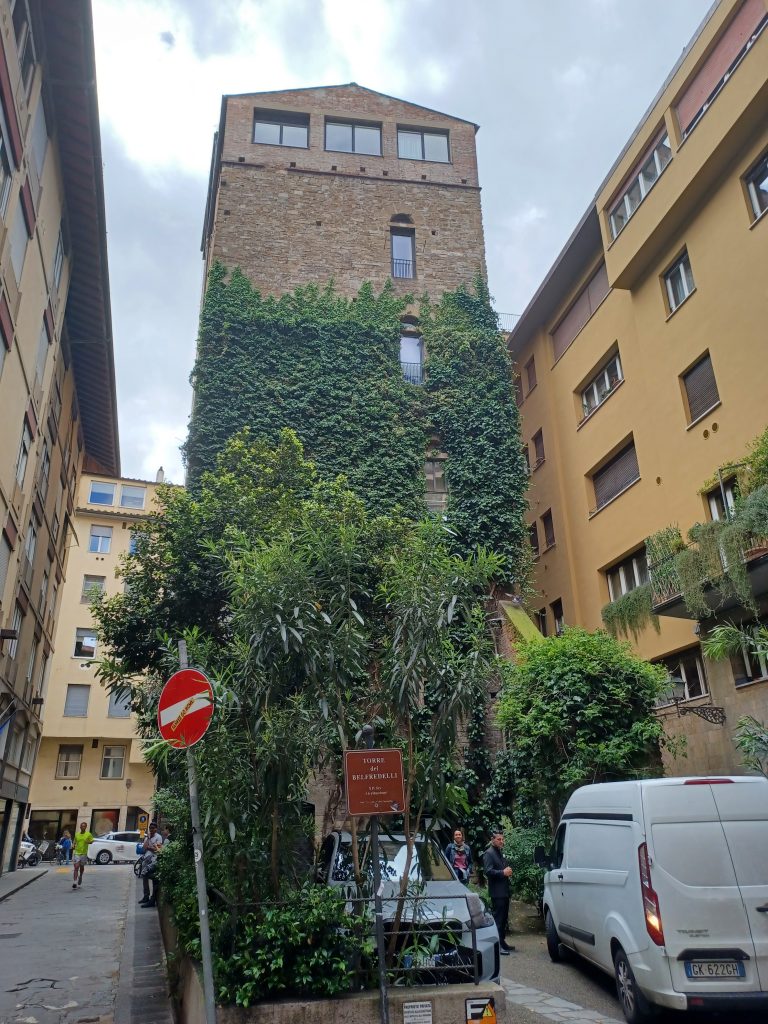
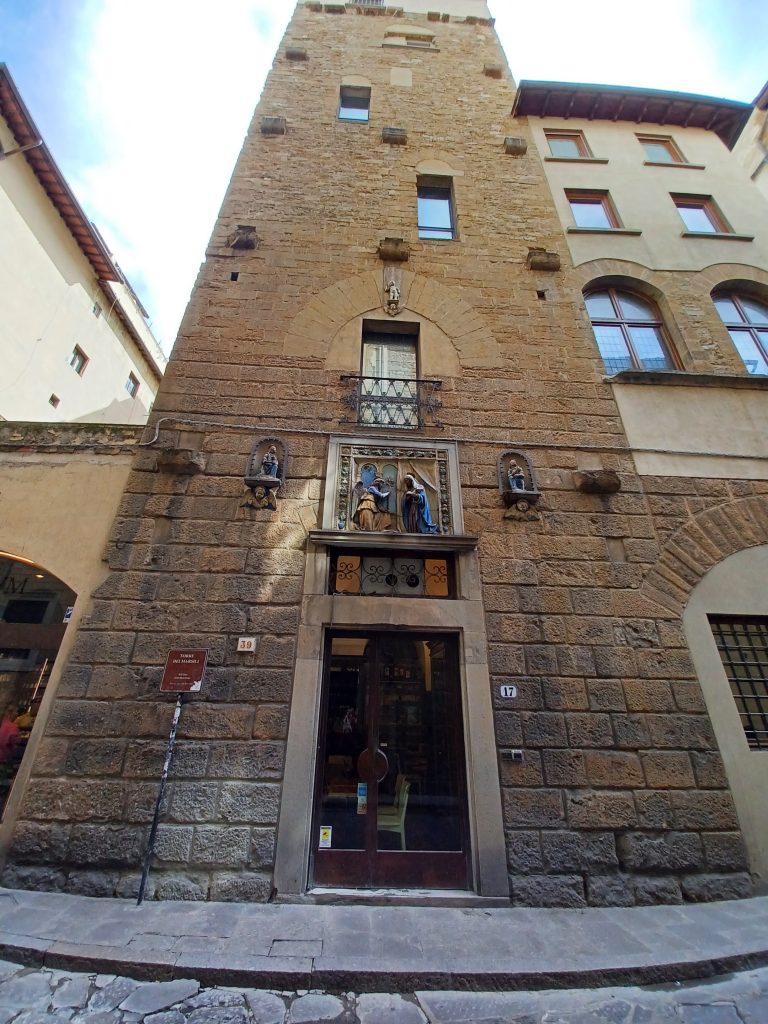
St John the Baptist
I reach the south end of the medieval bridge, Ponte Vecchio, where people are milling about enjoying the sunshine. Continue past it and meet the river again where a strange bronze statue of Santa Giovanni Battista (St John the Baptist), patron saint and protector of Florence, stands on a pedestal. Doesn’t look much like a protector, I have to say. Looks more like a vagrant in this depiction. A modern work by Giuliano Vangi.
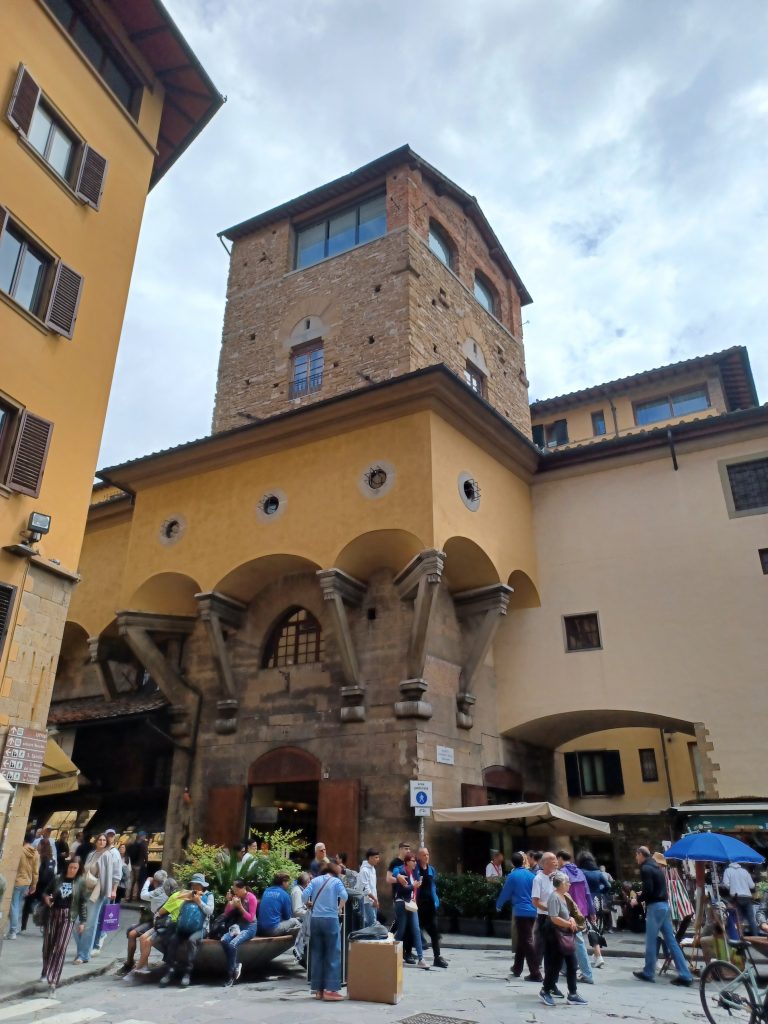
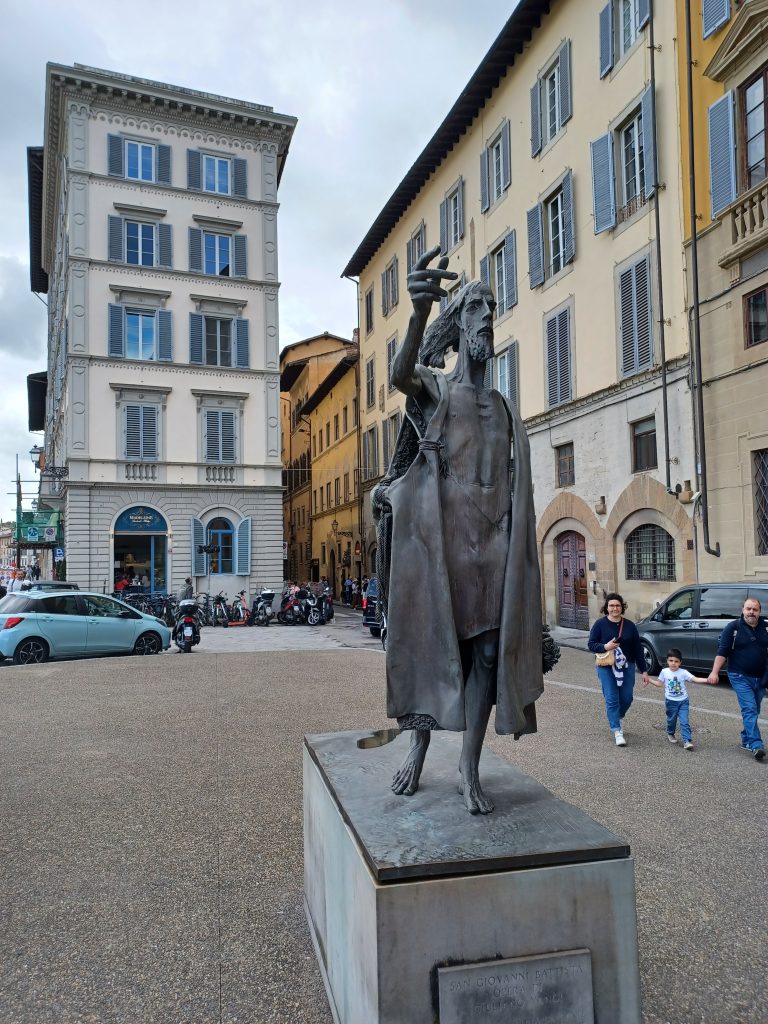
Porta San Miniato
Beyond St John the Baptist, I follow the narrow Via dei Bardi upwards between tall stone buildings, some with iron grills across windows, others with shutters. Cars are parked atop the old grey paving stones. Eventually reach the Porta San Miniato, a gate in the medieval walls marking the edge of the historic centre. Pass under its arch. A tempting restaurant appears opposite the gate. Oh good. Thirsty work it is wandering about. I make a beeline for an outside table, plonk myself down and order wine, water and ravioli stuffed with ricotta with shredded truffles scattered over it. Fabulous. As I sip my Chianti, I watch some people riding down the hill on green bicycles.
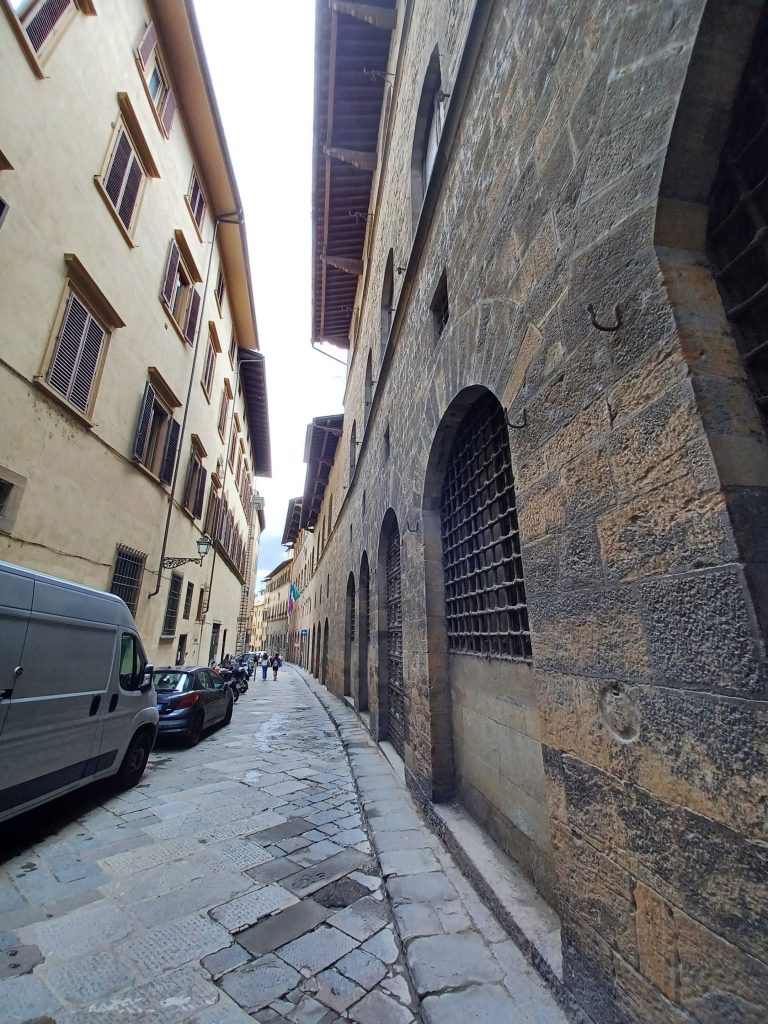
And a couple of mini-moke type tourist vehicles drive by. After lunch I amble upwards alongside the crenellated walls until I reach the Via dei Bastion and the Rose gardens. Splendid view over the ancient walls and the centre of Florence from here. And glorious rose garden.
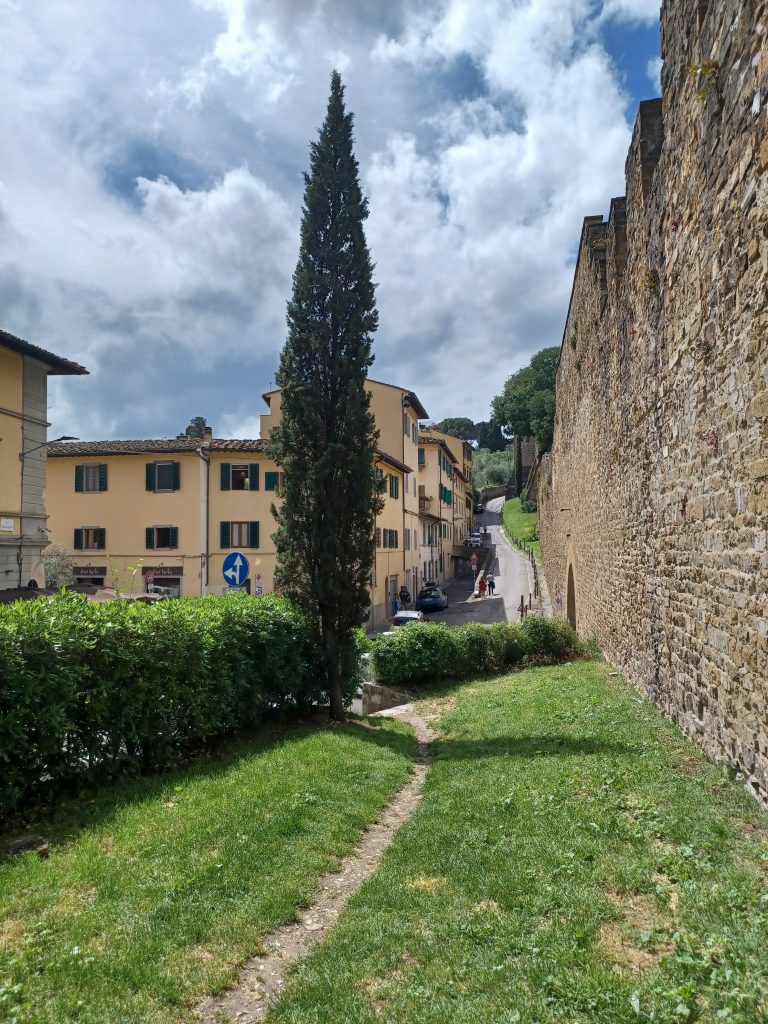
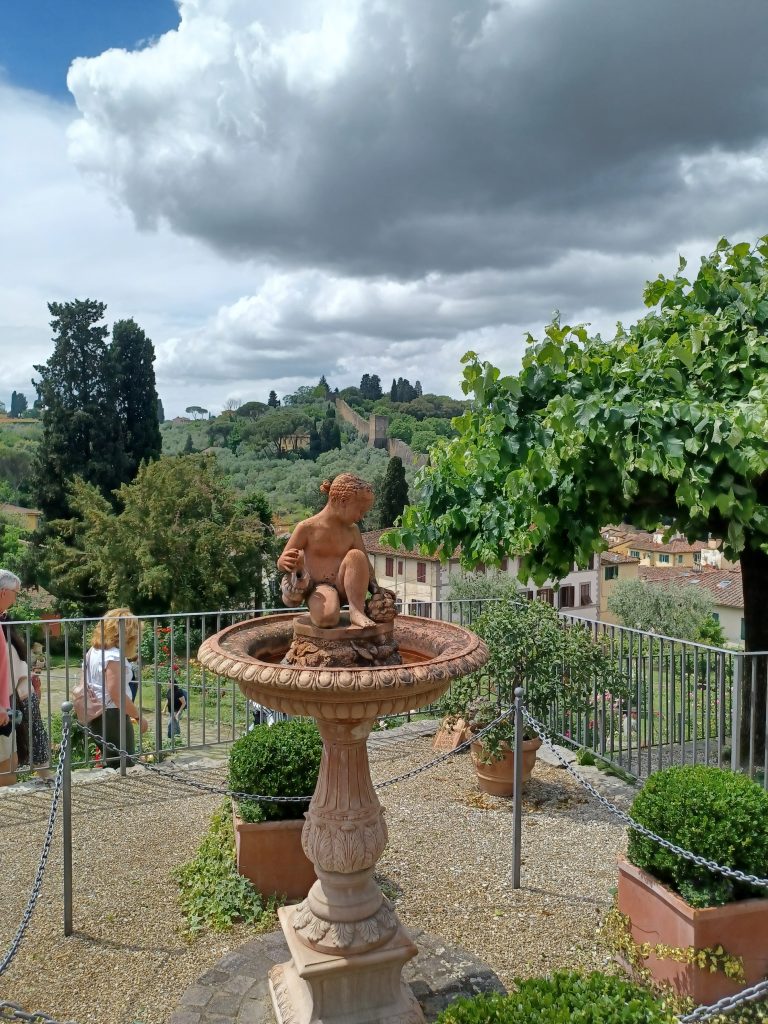
Piazzale Michelangelo
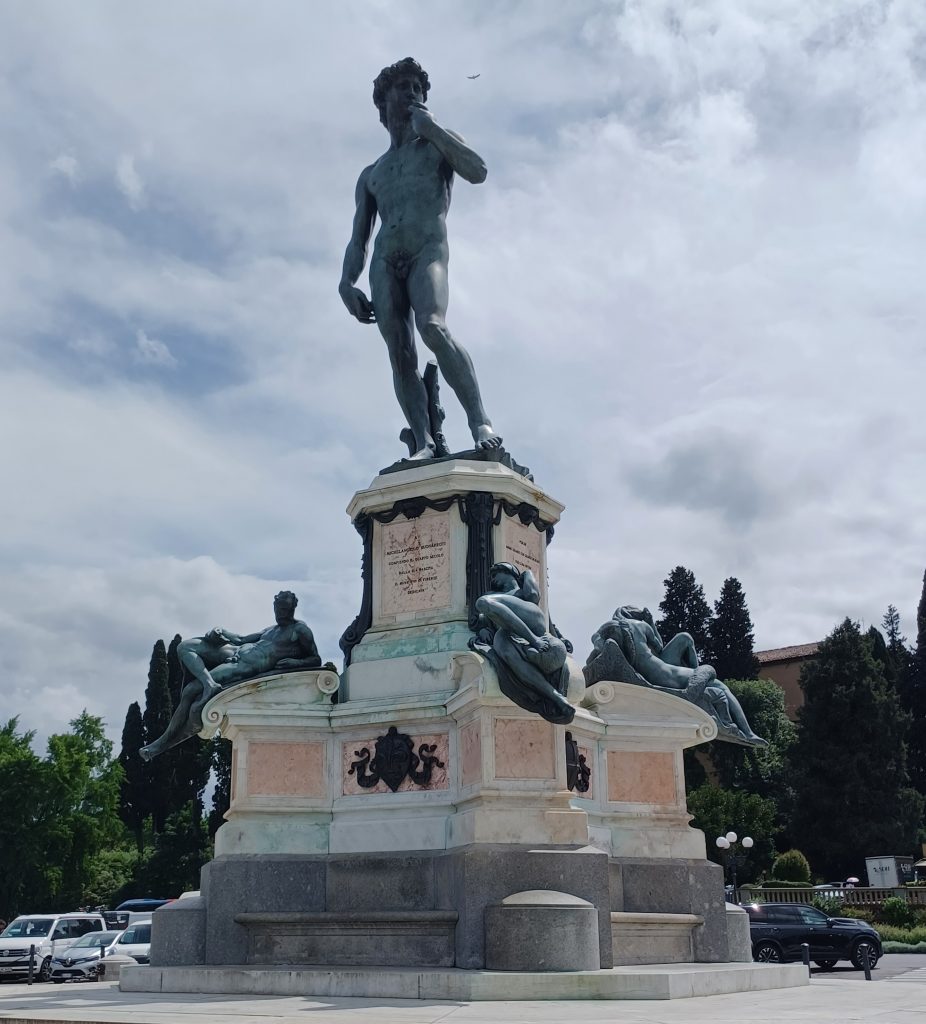
I exit the Rose Garden and proceed up the winding road named after the architect Giuseppe Poggi, who designed the Piazzale Michelangelo, which I now reach. The square was built in 1869 to honour Michelangelo Buonarotti, the famous renaissance artist. A large bronze replica, by Clementi Papi, of his statue of David perches centre stage, overlooking the city of Florence. Michelangelo sculpted the original statue of David out of Carrara marble, which is now housed in the Accademia Gallery.
It is the view from the Piazzale here though which perhaps captures most hearts and minds. Totally stunning. From these hillsides once stood visitors from times past. Here they would find inspiration. I gaze at the panorama for some while. The closest hill is that where the town of Fiesole sits with its Roman theatre. Mount Morello rises up behind. And at the foot one can see the most famous landmarks in the city including Florence’s cathedral (the Duomo), the Palazzo Vecchio and the Basilica of Santa Croce. The River Arno flows along in front. Plenty of tourists are gazing at this panorama today too. Close by are stalls where vendors sell tapestries and pictures of the scene.
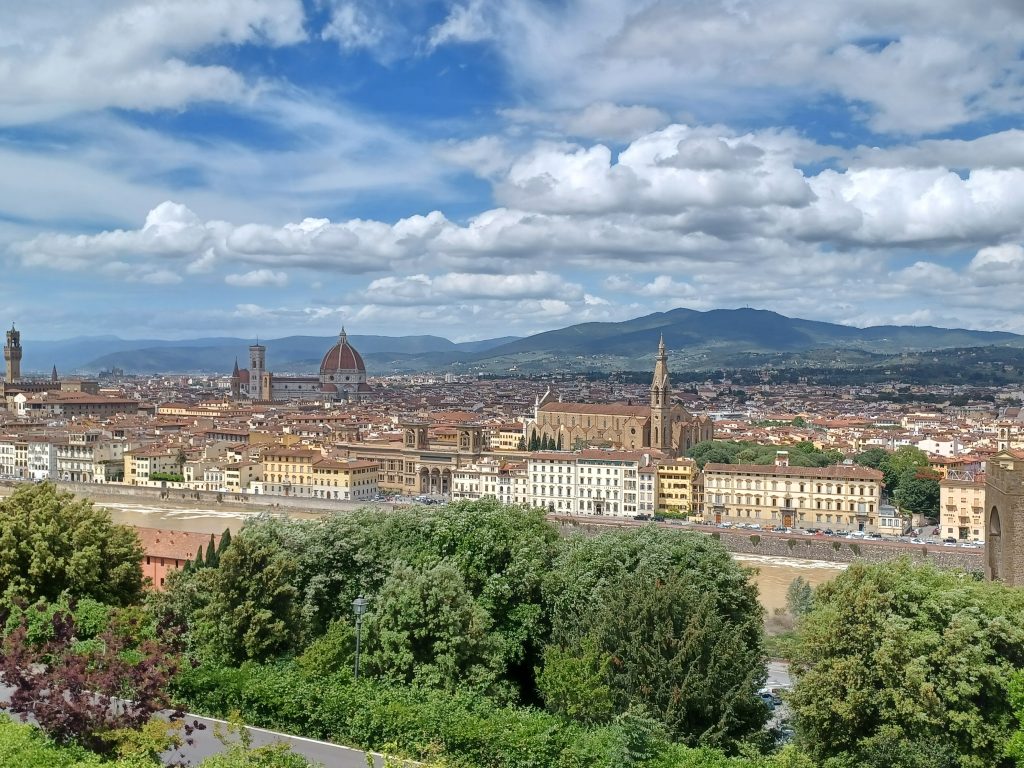
Torre di San Niccolò
Wend my way slowly back down towards the river. Another huge stone tower appears. This is the medieval Tower of San Niccolò, once forming part of the defensive walls of the city. There were apparently fourteen towers with connecting walls at one time. Now the tower stands isolated and seemingly empty arising from the midst of the Piazza Giuseppe Poggi next to the river. Various staircases and windows and crenellations ornament it along with three huge arches. The bottom one seems to be a gate, about twice as high as the other two. There are 160 steps to the top where guards would have kept watch. From there is a 360 degree view of the city. The tower opens in June, I gather. It is May.
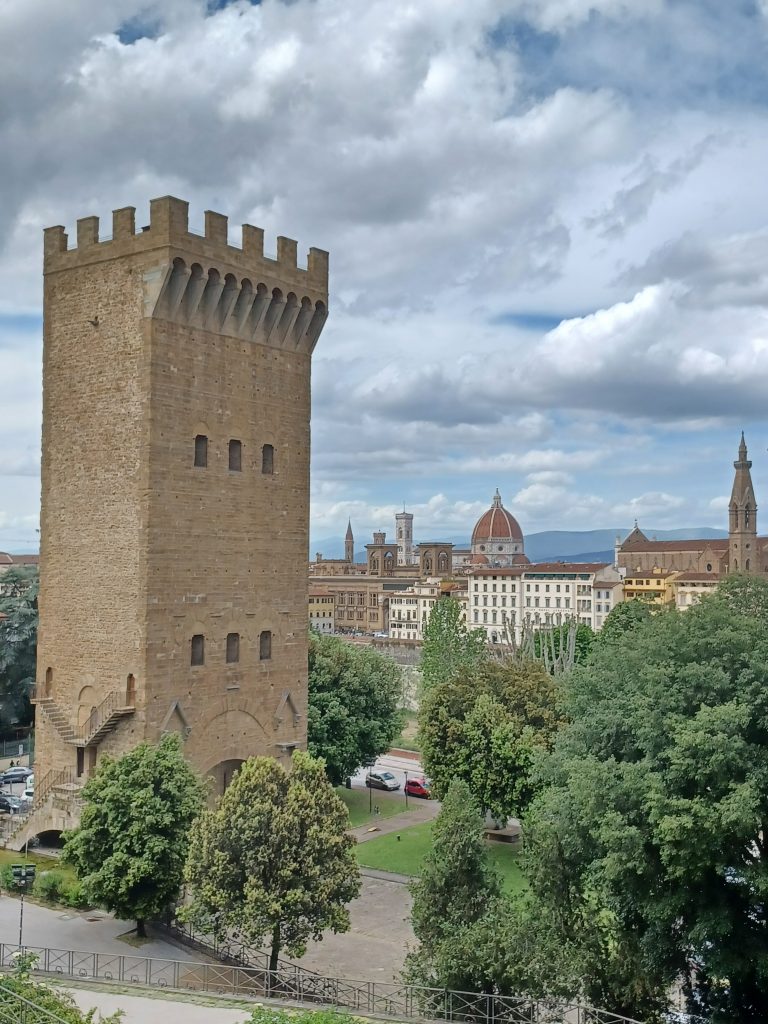
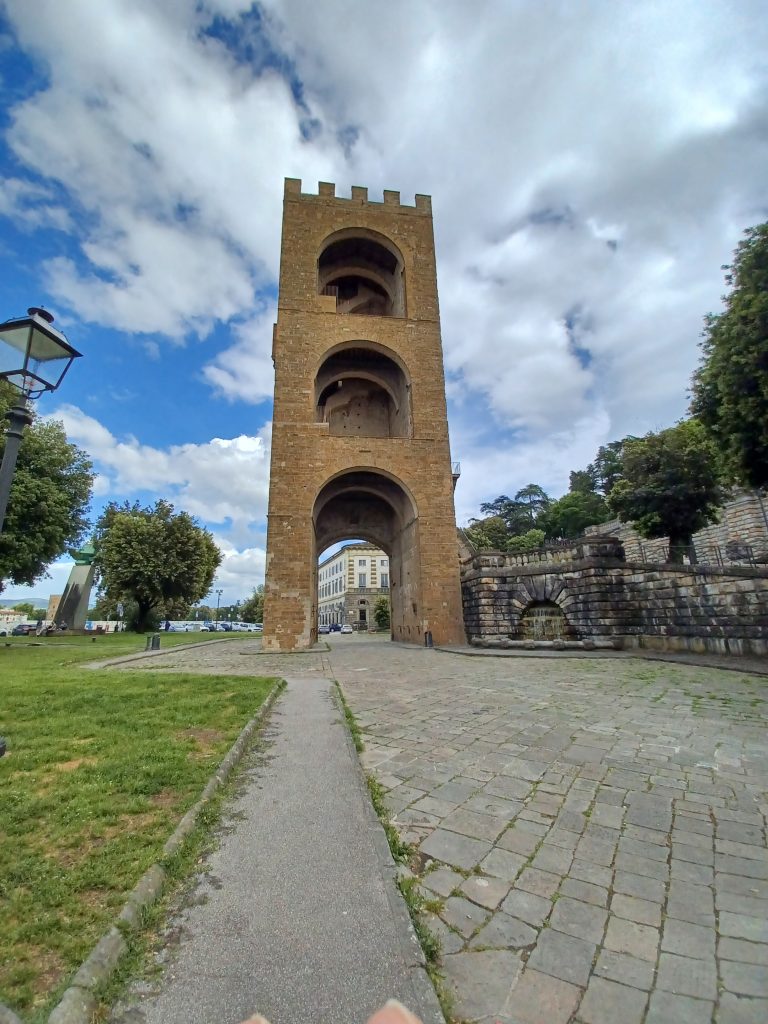
I wander across the square and then cross the road to the river bank towards another bridge, the Ponte alle Grazie. There is a bit of green and marshy stuff by the river here where some birds are messing about. Reach the bridge and cross over. The river runs fast in a thick muddy stream towards the Ponte Vecchio and I pause to watch it rushing along.
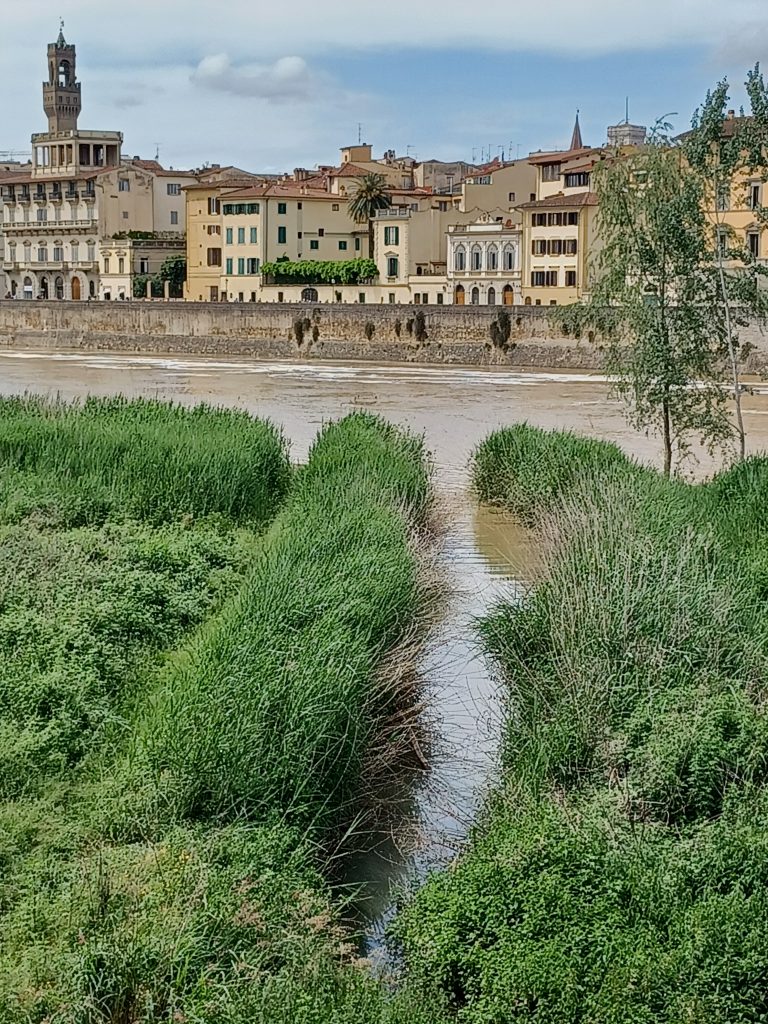
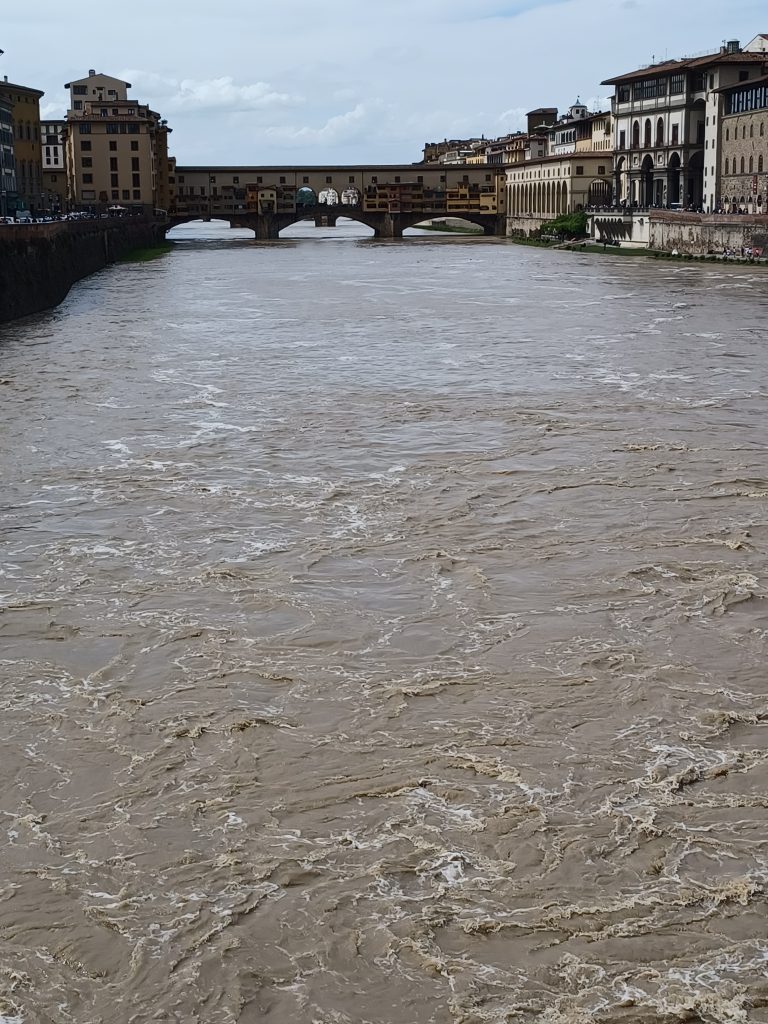
Basilica of Santa Croce
I veer away from the river now towards the bell tower of the Basilica of Santa Croce and its 19th century Neo-Gothic marble façade. Travellers, along with a few pigeons, admire it from the large paved square. Stunning symmetrical structure. According to its website, Santa Croce is the ‘most monumental of all Franciscan churches’, and its foundation stone was laid in 1295. Fantastic inside with stained glass windows and frescos by Giotto, and sixteen chapels with tombs of the great and the good, or perhaps not so good, such as Michelangelo and Machiavelli. Also tombs of some foreigners and a few women.
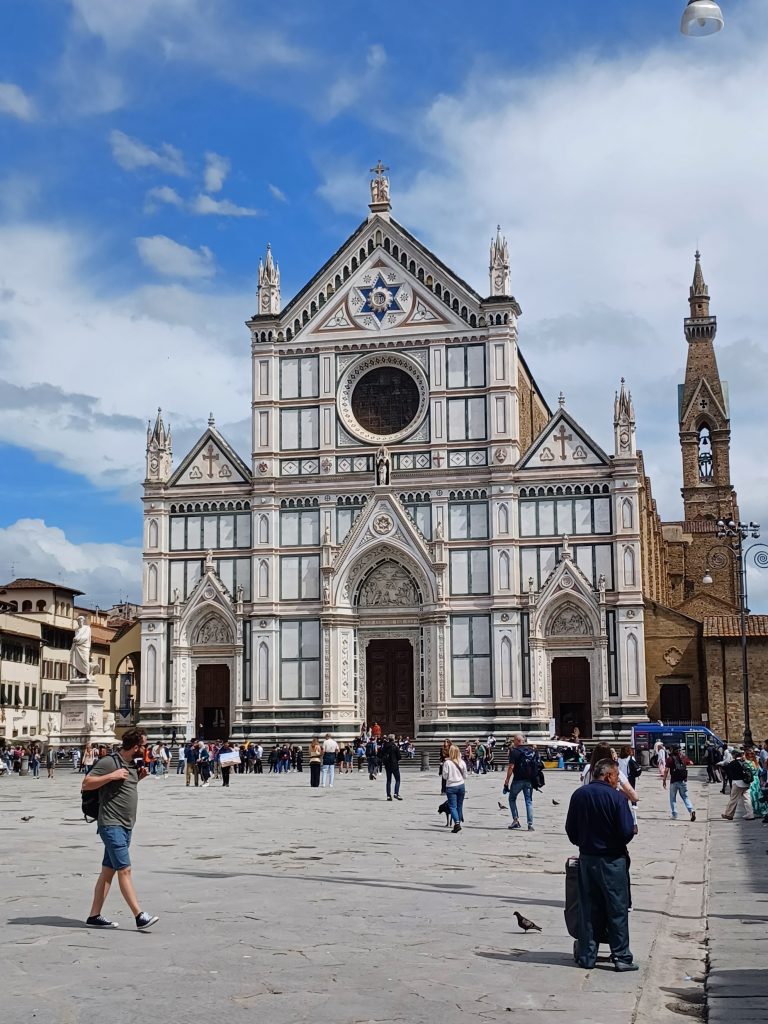
The latter include Florence Nightingale, who was born in Florence. In front of the Basilica is a statue to Dante Alighieri, famous poet of the middle ages, he who wrote the Divine Comedy.
Piazza della Signoria
A short walk along another narrowish street adorned with more palatial buildings, cafés and top end souvenir shops and I arrive in the Piazza della Signoria. It is here where another replica, by Luigi Arrighetti, in marble, of Michelangelo’s David stands in front of the Palazzo Vecchio. The original was placed here in 1504 but, due to fears of deterioration, it was removed in 1873 and placed in the Accademia Galleria. Anyway, David is depicted holding the sling with which he slew Goliath. Many other replicas of David exist in various places around the world, including a plaster cast in the V&A Museum in London, one in Denmark, one in New York, one in Cuba…
Alongside David in the Piazza are other famous items of statuary including the fountain of Neptune by Ammanati, and the great equestrian statue of Cosimo I de Medici, Duke of Florence, Grand Duke of Tuscany, by Giambolgna, erected here in 1594. And within the 14th century Loggia dei Lanzi are depicted mythical mortals and gods, such as that of Perseus with the head of Medusa by the famous sculptor Benevenuto Cellini. A contemporary artwork amongst all this Renaissance splendour is a golden statue of a woman in jeans, tee shirt and sandals with a mobile phone. Entitled ‘Time Unfolding’ by Thomas J Price. It has had a mixed reception.
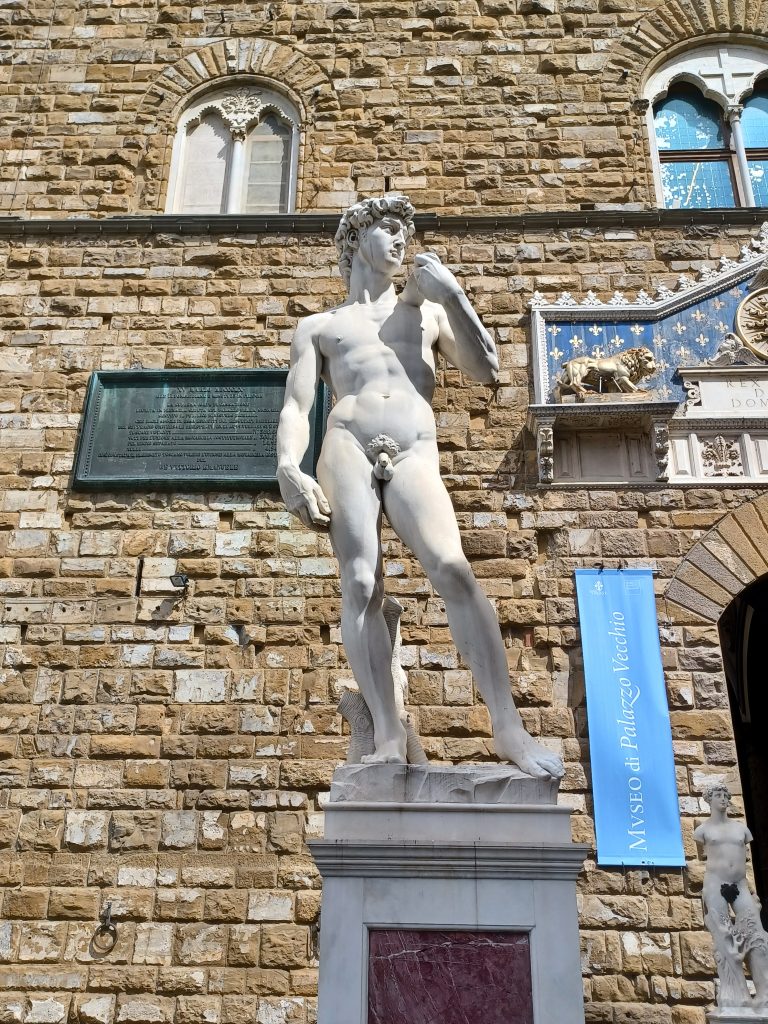
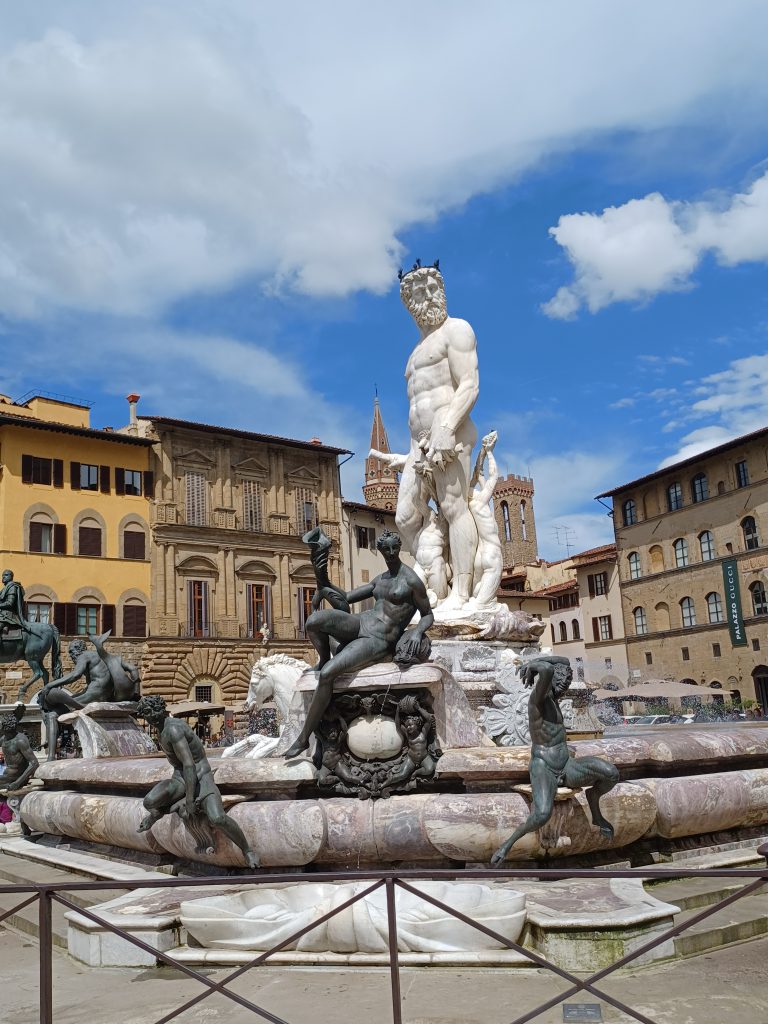
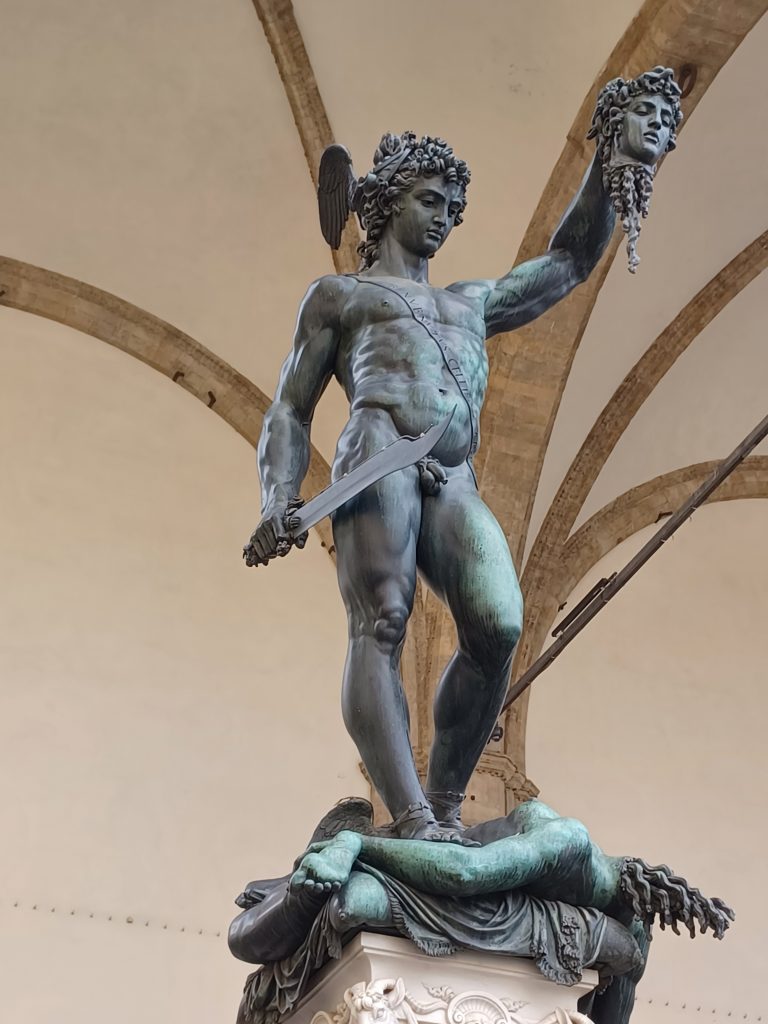
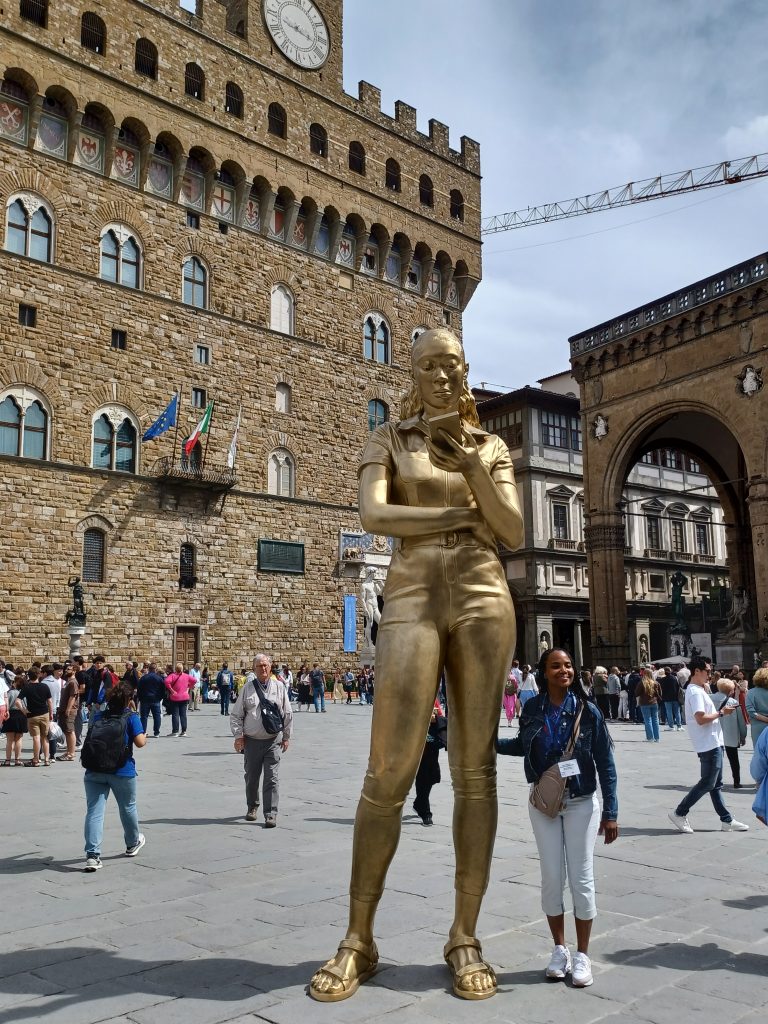
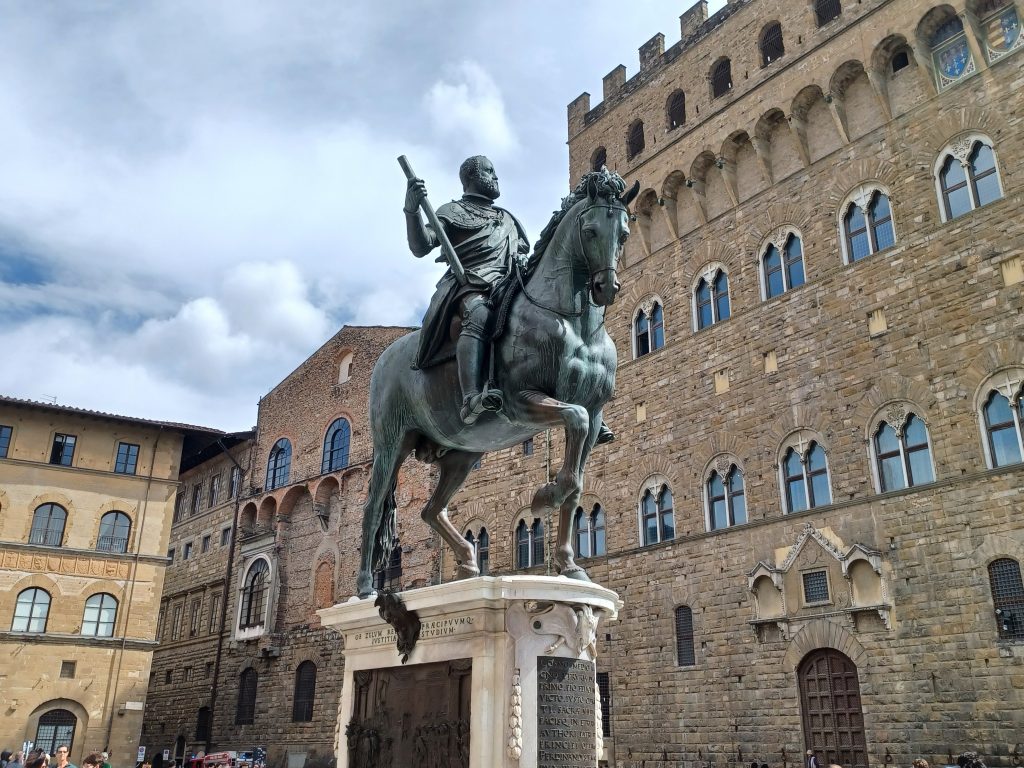
Vasari Corridor
Alongside the Palazzo Vecchio is the famous Uffizi Gallery and it is from inside there on the top floor that the Vasari corridor runs. This, once secret, corridor connects the building with the Palazzo Pitti, and runs alongside the river and over the top of the Ponte Vecchio. It was created for Cosimo I de Medici by Georgio Vasari so that the Grand Duke could pass unmolested between his residence (the Pitti Palace) and the then administrative and judicial offices (uffizi). Now the corridor is home to about 1000 paintings and other objets d’art.
Cattedrale di Santa Maria del Fiore (Florence Cathedral)
Head towards the Duomo now, otherwise known as the Cattedrale di Santa Maria del Fiore (Saint Mary of the Flower), Florence’s cathedral. Famous for its massive and splendid dome by Filippo Brunelleschi built of stone and brick between 1420 and 1436 in an octagonal shape. The cathedral building itself is of white, green and red marble and the massive golden ball on top was designed by Verrocchio. Inside it is all marble floors, stained glass windows, gothic arches, bas-reliefs, sculptures, mosaics and paintings by Florentine renaissance artists.
One can climb to the top of the dome and look down upon it all. However, I have climbed to the top before so resist the temptation today. Anyway, I realise, you have to book a time slot in advance now. I went up it years ago without having to bother with all that. Lot of steps too. No lift. Same applies to the stupendous bell tower by Giotto alongside, completed in 1359, with its 12 bells. 414 steps to the top. Visitors with heart conditions etc are not recommended to climb up.
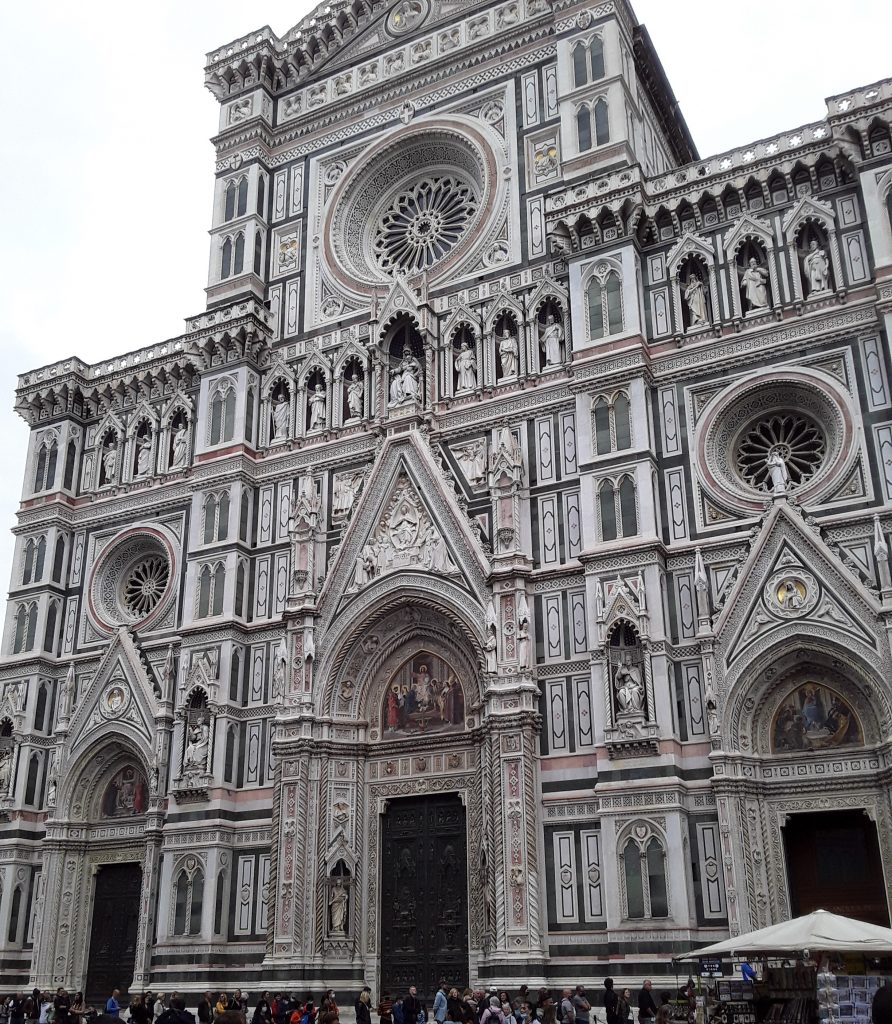
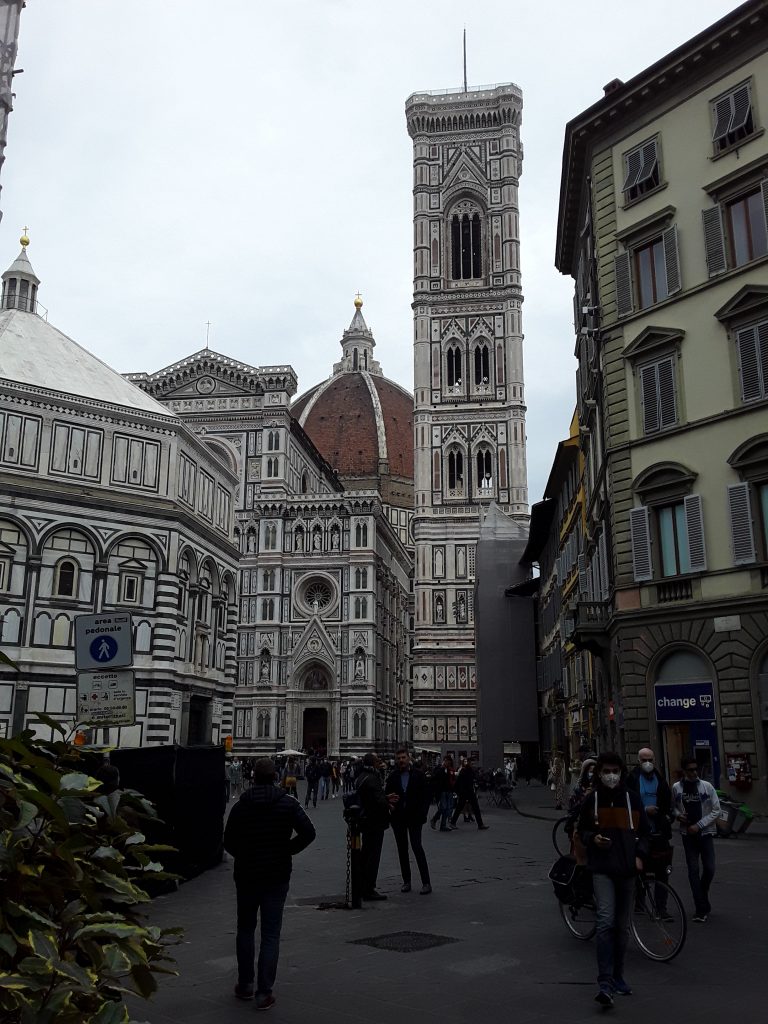
Baptistry of St John
Next to the Duomo is Lorenzo Ghiberti’s octagonal shaped Baptistry of St John, the oldest religious building in Florence, I understand, and completed in 1128. Dedicated to Florence’s patron saint, St John the Baptist. The Gates of Paradise, the fantastic bronze doors to the Baptistry, designed by Ghiberti, depict scenes from the Old Testament. Considered one of the greatest artworks ever created. I peruse the east doors. Phew. Words cannot describe their beauty sufficiently, at least mine can’t. Best go there and see for yourself.
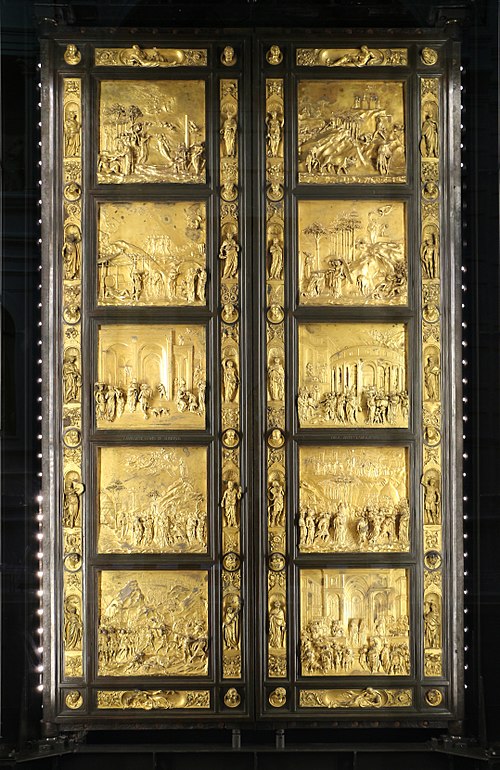
Ponte Vecchio
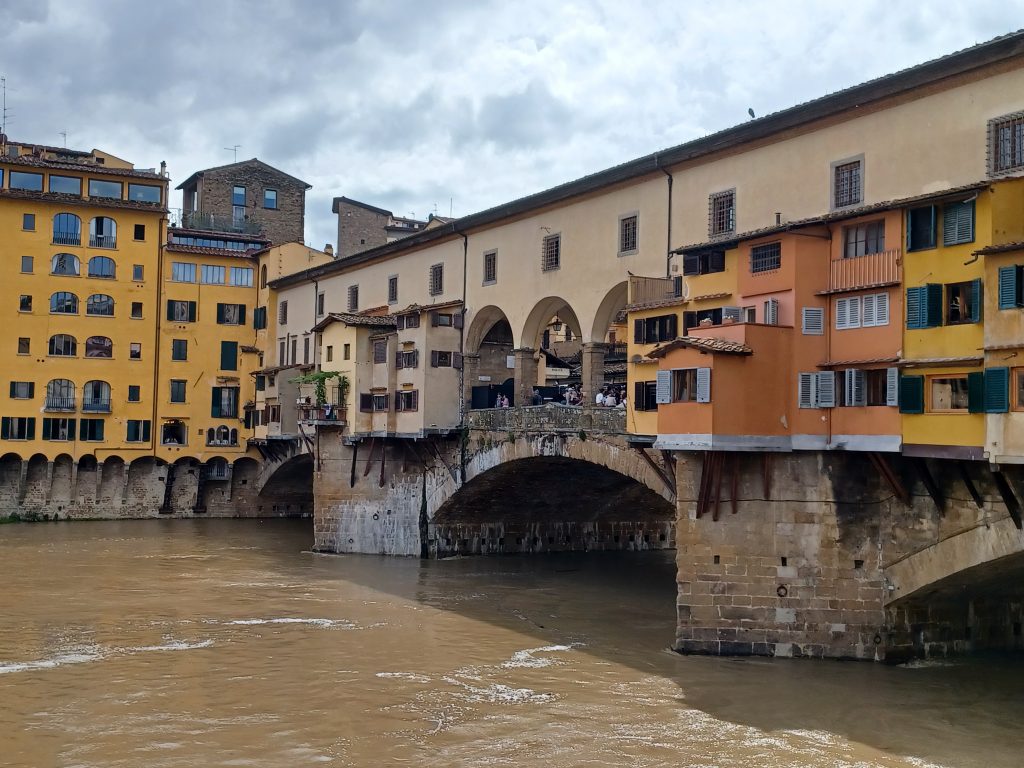
Mosey back to the Ponte Vecchio, Florence’s most famous and oldest bridge which spans the Arno where it is narrowest. Although there were bridges before this one, which were destroyed by floods, the current bridge, built of stone in around 1345, has stood here ever since, although it has been rebuilt/modified a number of times.
One story goes that Hitler so admired the bridge when visiting it, courtesy of an invitation by Mussolini, that it was spared from German bombing in 1944, while all the other bridges in Florence were destroyed. The bridge consists of three arches with shops along the top. I follow the route of the Vasari corridor, pausing underneath said corridor to photograph the bridge up close before stepping onto it. Many tourists are peeping in at the goldsmiths shops and taking pictures from spaces overlooking the Arno. It seems appropriate for a bust of Benvenuto Cellini to be placed here. He it was who sculpted Perseus with the head of Medusa in the mid-16th century, located in the Loggia dei Lanzi in Piazza della Signoria. And he was also a goldsmith. The bust, sculpted by Raffaello Romanelli, has an inscription on it from the Goldsmiths of Florence to the ‘Master’.
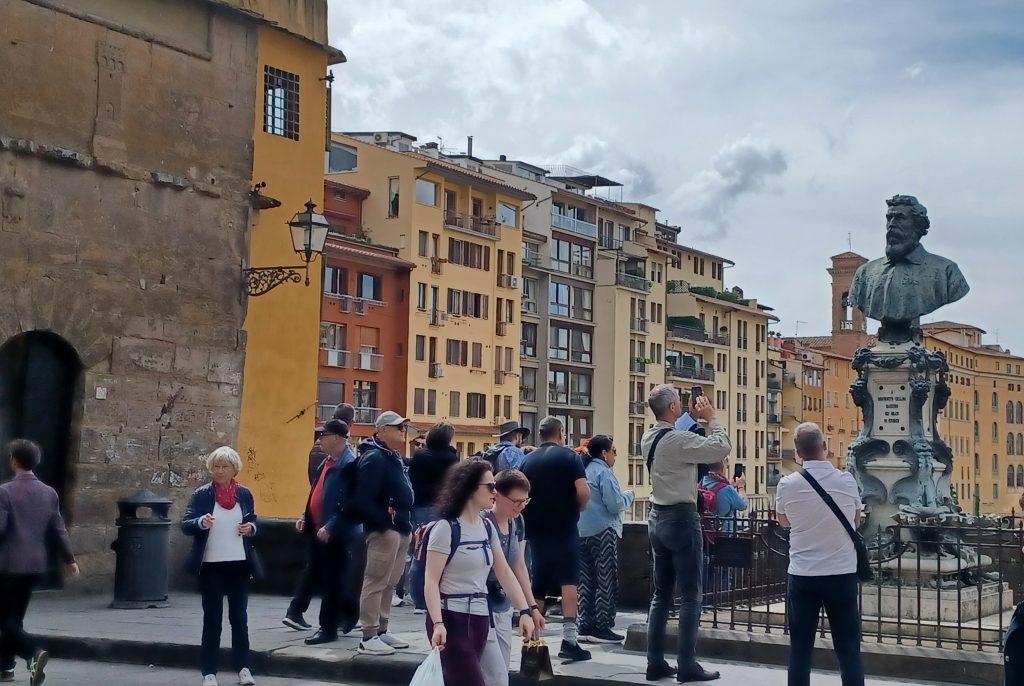
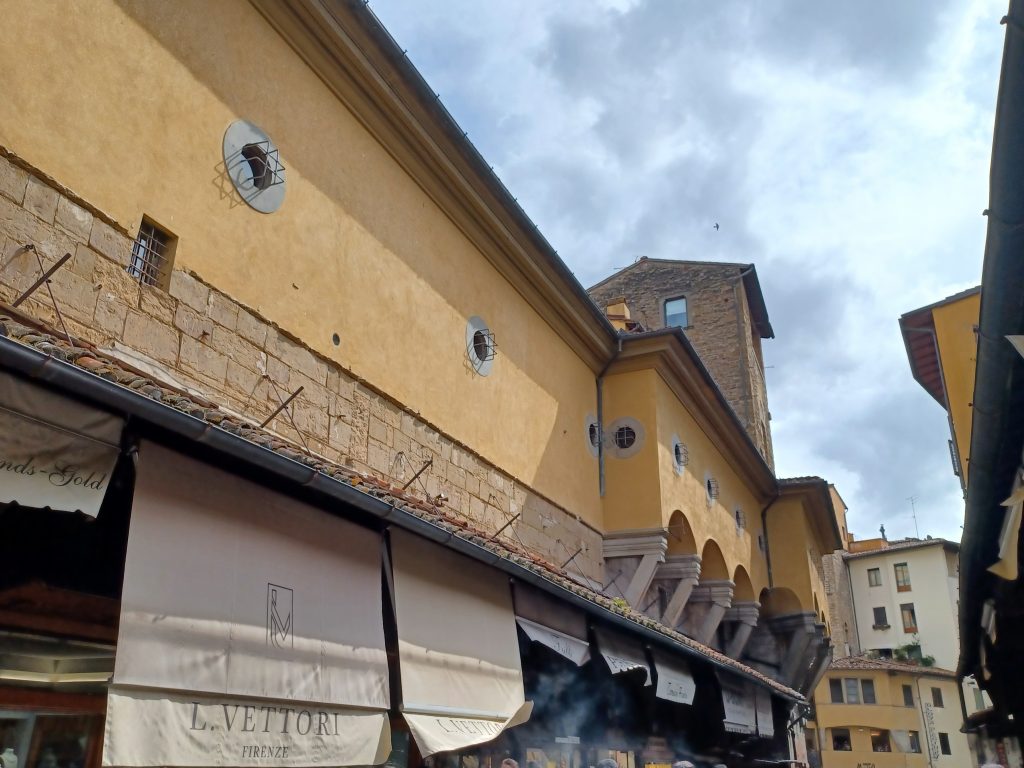
Time to head back to my starting point at the British Institute now. Much more to see in Florence of course, including the Palazzo Pitti at the end of the Vasari Corridor and the lovely Boboli gardens behind them. Nonetheless, my walk has covered some of the sights of the old city from the outside. I did not dwell for long inside any of them this time. Far too lovely outside today. Next time.

Leave a Reply